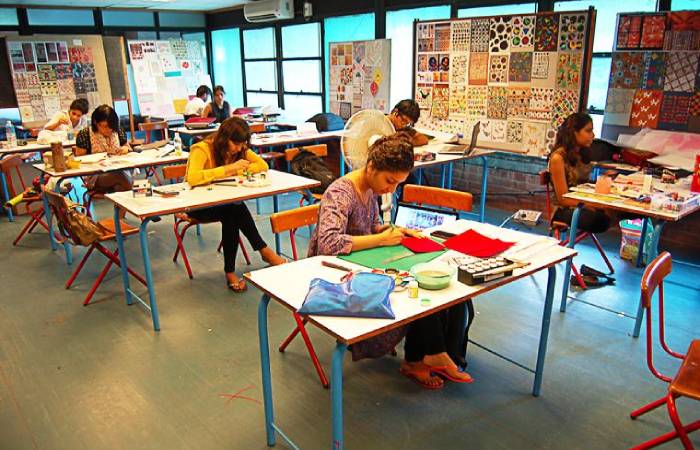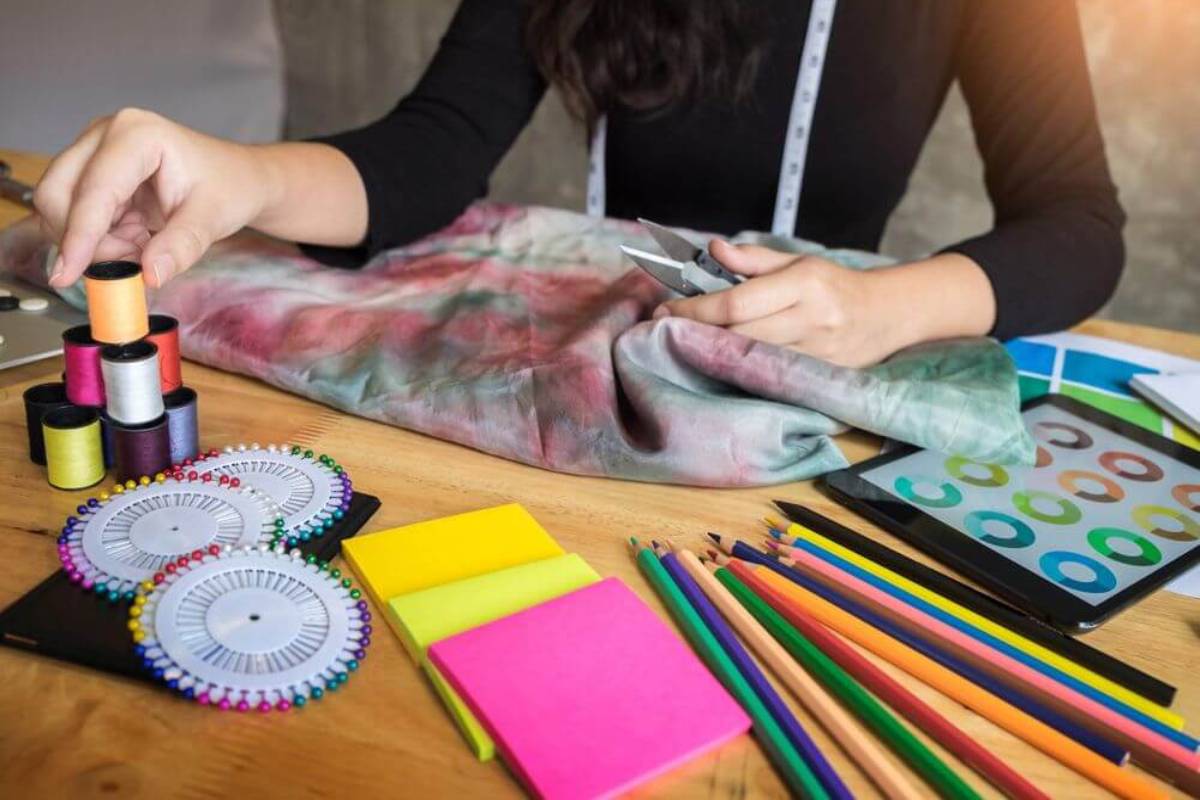Table of Contents
Introduction
Textile design is that area that dedicates to the production of products that concern the textile industry, such as threads, fibres, fabrics.
And that generally destines to elaborate other products that will commercialize in other areas such as clothing and decoration.
On the other hand, textile design also deals with developing what is known as technical textile, which involves those fabrics that require a super special elaboration.
They intend to use in fields such as medicine, engineering, architecture and sport, which precisely demand unique characteristics adapted to the activities carried out.
Importance of Textile Design

- The textile industry is one of the most critical sectors of the economy worldwide, not only because what they produce is consumed in huge quantities by the public and merchants.
- But also the enormous number of people they have directly employed and indirectly in the industries that go hand in hand.
- Such as clothing, spinning, dyeing, haute couture and weaving, to name a few.
- Without a doubt, the industrial revolution was a pivotal moment in the development of the textile industry.
- Meanwhile, the most notable events added in favour of its expansion are the invention of the flying shuttle, created in 1733 by the Englishman John Kay. It facilitated the weaving of cotton garments in large quantities and at a higher speed.
- Until then, cotton import from India, and it was complex to sustain the enormous demand for it with the imports above that were made and did not meet the needs.
- It should note that at the same time, other neighbouring areas such as colouring, bleaching and printing began to develop. And not to mention the appearance of the spinning machines and the water machine.
Concept of Textile Design
A technique that deals with providing the goods and services to be generated with a utility and an aesthetic that makes them attractive to the market and that they are easy to manufacture.
It also considers the equipment and personnel required to produce them. Therefore, it encompasses the design of products and their manufacturing process.
It is essential to consider the aesthetic and the utility part since its exact shape can condition its operation, such as the aerodynamic design of cars. This design allows them to achieve higher speeds by reducing air pressure.
Ideas about new products or modification of existing ones come either from the market itself due to some identified need or from the results of research due to technological advances.
Studies such as technical feasibility analysis, financial evaluation, market study, etc. Then determine if it is possible to manufacture and sell such a product.
To arrive at the final design and, once the evaluation of the initial idea pass, the product goes through three phases:
1. Preliminary Design
- We try to achieve the best design, for which factors such as the function to perform, its size and shape.
- The material to use, how it is manufacture, cost, quality take into consideration. Respect for the environment, its performance, etc.
2. Tests
- They carry out the construction of prototypes to verify the technical and commercial goodness of the new design.
- The prototype reflects most of the product’s physical characteristics so that engineering aspects can modify from the results of these tests.
- Commercial success can test utilizing a market test.
3. Final Design
- The stage that definitively turns the product into something salable, manufacturable and capable of providing a service. For this, studies related to:
Modular Design
- A set of essential components developed for the products that can assemble, giving rise to different products that the client perceives as distinct.
- In reality, their production only requires a small number of essential components.
- It is a type of flexible standardization that allows having a wide variety of products and, simultaneously. A low number of features, the clearest example of which is the case of computers.
Reliability
- The probability that the product works for a specific time under the operating conditions for which it design.
- The reliability of a product depends on the reliability of each of its components and the configuration that connects each of them (in series or parallel).
- To increase the system’s reliability, redundant elements use: it calls total active redundancy when several pieces are placed in parallel. It is enough that one of them works for the system to operate under normal conditions.
- Partial active redundancy when several elements place in parallel and more than one of them must work for the system to operate.
- A typical case in aviation, where specific devices require that, for example, two engines of the three or four that can manage to have.
Safety
- In addition to the legal regulations relating to the safety of each product.
- The manufacturer must reduce the risk by avoiding the use of toxic materials, minimal parts (such as toys for children).
- And must endeavour to use labels that warn of certain dangers in case of ingestion, etc.
- The development of new technologies has facilitated the design of new products.
- Or modification of existing ones more quickly, using CAD (Computer-aided design, ‘Computer-aided design’).
History of Textile Design
- The history of textile design energies back thousands of years. Because of the perishableness of textiles, early examples of textile design are infrequent.
- When trade networks shaped in European countries, silk, wool, cotton, and flax fibre textiles became valuable commodities.
- Many early civilisations, including Egyptian, Chinese, African, and Peruvian, practised early weaving techniques.
- One of the eldest examples of textile design finds in an ancient Siberian tomb in 1947. The tomb was supposed to be that of a prince’s and is aged back from 464 ABD, making the tomb.
- And its contents over 2500 years old.
- The rug, known as the Pazyryk rug, preserve in ice all those years. And is detailed with elaborate deer and men riding on horseback.
- The designs are similar to present-day Anatolian and Persian rugs that apply the directly proportional Ghiordes knot in the weaving.
- The rug currently displays at the Hermitage Museum located in St. Petersburg, Russia.
Conclusion
The design of textile one area dedicated to the production of products regarding the textile industry, such as threads, fibres, fabrics, etc.
And generally intend to produce other products that market in other areas such as clothing and decoration.

